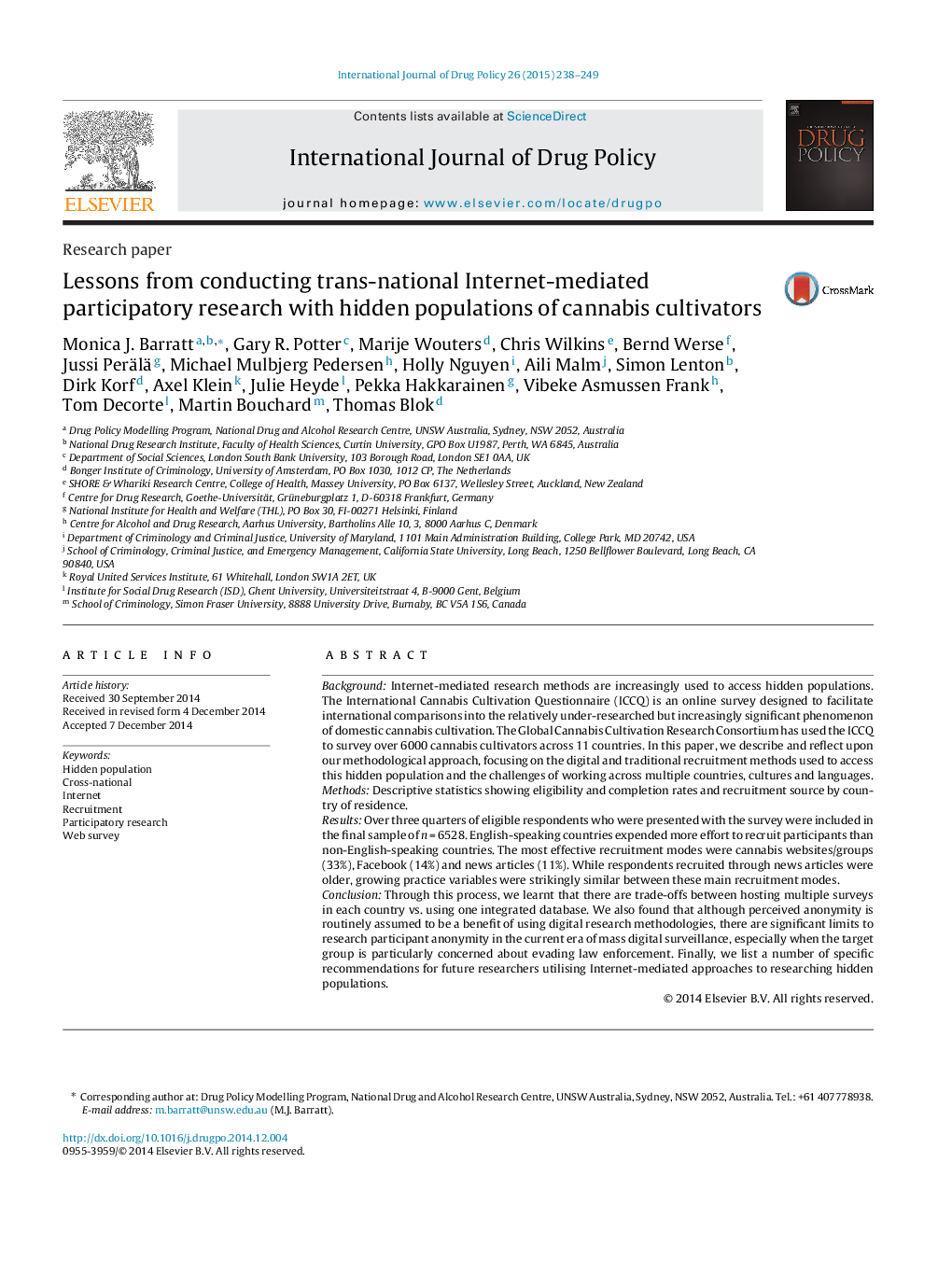| کد مقاله | کد نشریه | سال انتشار | مقاله انگلیسی | نسخه تمام متن |
|---|---|---|---|---|
| 1075244 | 1486288 | 2015 | 12 صفحه PDF | دانلود رایگان |
• Over 6000 cannabis cultivators from 11 countries completed our web survey.
• It was more difficult to recruit cannabis cultivators in English-speaking countries.
• Growing practices were strikingly similar regardless of recruitment mode.
• Meaningful engagement with the target population improves data quality and quantity.
• Research participant anonymity is constrained by mass digital surveillance.
BackgroundInternet-mediated research methods are increasingly used to access hidden populations. The International Cannabis Cultivation Questionnaire (ICCQ) is an online survey designed to facilitate international comparisons into the relatively under-researched but increasingly significant phenomenon of domestic cannabis cultivation. The Global Cannabis Cultivation Research Consortium has used the ICCQ to survey over 6000 cannabis cultivators across 11 countries. In this paper, we describe and reflect upon our methodological approach, focusing on the digital and traditional recruitment methods used to access this hidden population and the challenges of working across multiple countries, cultures and languages.MethodsDescriptive statistics showing eligibility and completion rates and recruitment source by country of residence.ResultsOver three quarters of eligible respondents who were presented with the survey were included in the final sample of n = 6528. English-speaking countries expended more effort to recruit participants than non-English-speaking countries. The most effective recruitment modes were cannabis websites/groups (33%), Facebook (14%) and news articles (11%). While respondents recruited through news articles were older, growing practice variables were strikingly similar between these main recruitment modes.ConclusionThrough this process, we learnt that there are trade-offs between hosting multiple surveys in each country vs. using one integrated database. We also found that although perceived anonymity is routinely assumed to be a benefit of using digital research methodologies, there are significant limits to research participant anonymity in the current era of mass digital surveillance, especially when the target group is particularly concerned about evading law enforcement. Finally, we list a number of specific recommendations for future researchers utilising Internet-mediated approaches to researching hidden populations.
Journal: International Journal of Drug Policy - Volume 26, Issue 3, March 2015, Pages 238–249
